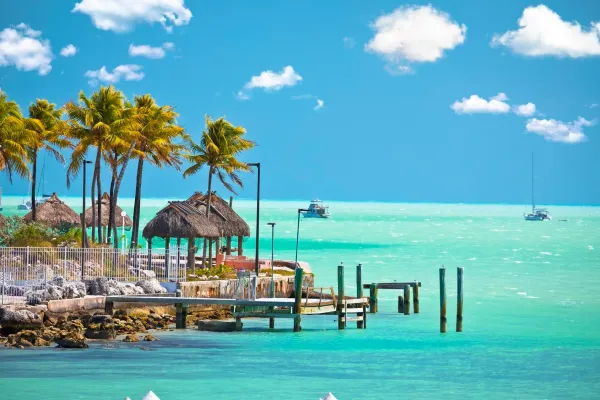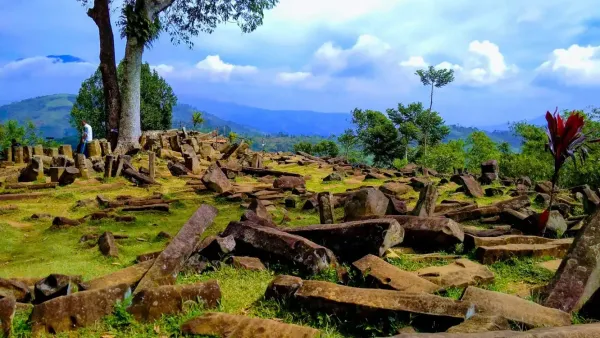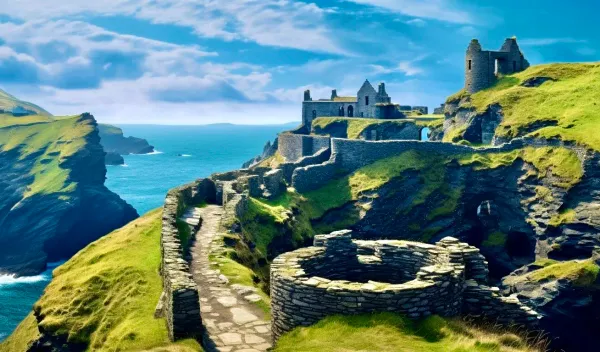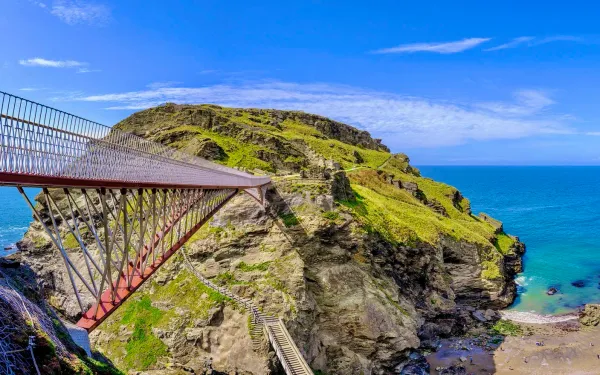Exploring Bohemian Switzerland National Park: Top Attractions and Hiking Trails
Discover the stunning landscapes of Bohemian Switzerland National Park, Czech Republic. Uncover top attractions like Pravčická brána, scenic viewpoints, and the best hiking trails. Dive into a world of majestic sandstone formations, lush forests, and breathtaking gorges.

Table of Content
- Significance and Unique Features
- Overview of Bohemian Switzerland National Park
- Top Attractions at Bohemian Switzerland National Park
- Hiking Trails at Bohemian Switzerland National Park
- Tips for Visitors
- Local Flora and Fauna
- Cultural and Historical Significance
- Ecotourism and Sustainability
- How to Get There
Nestled in the heart of the Czech Republic, Bohemian Switzerland National Park (Národní park České Švýcarsko) is a natural wonderland of unparalleled beauty and diverse landscapes. This pristine paradise, often referred to as the "Czech Paradise," is a captivating destination for nature enthusiasts, hikers, and adventure seekers. With its picturesque sandstone formations, lush forests, and meandering rivers, Bohemian Switzerland stands as a testament to nature's artistry.
Significance and Unique Features

Bohemian Switzerland National Park holds a special place in the hearts of locals and travelers alike, for numerous compelling reasons. The park, established in 2000, covers an expanse of approximately 79 square kilometers, forming part of the Elbe Sandstone Mountains, which extend into Germany's Saxon Switzerland National Park. This cross-border wonderland showcases a unique geological formation characterized by towering sandstone pillars, deep canyons, and a network of hiking trails that take you through its enchanting terrain.
The park's most distinctive feature is the Pravčická Brána, a natural sandstone arch that reigns as the largest of its kind in Europe. This iconic landmark, immortalized in movies and literature, is a symbol of Bohemian Switzerland's unrivaled beauty. As you explore the park's terrain, you'll also discover Tisa Walls, Edmund's Gorge, the Bastei Bridge on the German side, and the intriguing Mariina Skála, each offering its own unique charm.
Overview of Bohemian Switzerland National Park

Bohemian Switzerland National Park, also known as České Švýcarsko, is a geographical marvel that extends across the northern reaches of the Czech Republic. As you venture into this enchanted realm, you'll find yourself immersed in a captivating mix of pristine nature, geological wonders, and cultural history.
Origin of the Name
The name “Bohemian Switzerland” has an interesting origin rooted in art and personal perception. In the late 18th century, Adrian Zingg and Anton Graff, two Swiss artists who were working at the Dresden Academy of Arts in Germany, visited the area. Struck by the similarities between the sandstone formations and the rugged landscapes of their native Switzerland, they began referring to the region as “Saxon Switzerland.” As the area extends into the Czech lands, the part situated in Bohemia, a historical region in the Czech Republic, came to be known as “Bohemian Switzerland.”
Location and History of Bohemian Switzerland National Park
Nestled within the Ústí nad Labem Region of the Czech Republic, Bohemian Switzerland National Park is situated in the northern part of the country, close to the German border. The park forms part of the larger Elbe Sandstone Mountains, with a portion of its terrain extending into Germany's Saxon Switzerland National Park. The juxtaposition of these two parks creates a stunning transnational landscape that beckons explorers from all corners of the world.
Established in 2000, Bohemian Switzerland National Park is a relatively young protected area. Its formation was a significant step towards preserving the park's unique geology, ecosystems, and cultural heritage. Today, it proudly stands as a sanctuary for a wide array of wildlife and a testament to the Czech Republic's commitment to conserving its natural treasures.
Ecosystem
Bohemian Switzerland National Park also boasts a diverse ecosystem, encompassing dense forests, meandering rivers, and lush meadows. The Kamenice River, which has carved deep canyons like the Edmund's Gorge, adds to the park's picturesque charm. It is a haven for various plant and animal species, making it an important region for biodiversity.
Transcending Boundaries
One of the park's unique features is its shared landscape with Saxon Switzerland National Park in Germany. Both parks are part of the same sandstone mountain range, and hikers and nature enthusiasts often traverse the border, exploring the natural wonders on both sides. This cross-border connection adds an extra layer of intrigue to your journey through Bohemian Switzerland.
Top Attractions at Bohemian Switzerland National Park
The park is renowned for its dramatic sandstone formations, with the Pravčická brána, the largest natural sandstone arch in Europe, standing as a highlight and a symbol of the park. Visitors are also drawn to the deep, mystical gorges such as the Edmund and Wild Gorges, where you can take a boat ride and navigate through the narrow, towering rock formations. The serene beauty of the park is encapsulated in viewpoints like Mariina skála and Vilemínina stěna, offering panoramic vistas of the lush forests and rugged landscape. Furthermore, the park’s rich biodiversity and network of well-marked trails provide ample opportunities for wildlife watching and hiking, ensuring that every visit is a unique and memorable experience.
1. Pravcice Gate (Pravčická Brána)

The jewel in the crown of Bohemian Switzerland, Pravčická Brána is the largest natural sandstone arch in Europe. Standing as an iconic symbol of the park, it has captivated visitors for generations. This majestic sandstone arch, reaching a height of 16 meters, is an impressive testament to the power of erosion. Hikers can follow scenic trails to reach this enchanting viewpoint, offering panoramic vistas of the surrounding landscape.
2. Tissa Walls (Tiské steny)

Tissa Walls, located on the western edge of the park, is a labyrinth of towering sandstone rocks, crevices, and narrow passages. It's an ideal location for climbers and hikers who appreciate dramatic rock formations. The towering walls have inspired numerous legends and are a photographer's dream, especially during the golden hours of sunrise and sunset.
3. Edmund's Gorge (Edmundova soutěska)

Edmund's Gorge is a hidden gem within the park, known for its serene beauty and refreshing river. This picturesque canyon features towering rock walls, and a wooden pathway takes you along the river, providing a relaxing and scenic hike. The tranquility of this place is a stark contrast to the rugged rock formations found elsewhere in the park.
4. The Bastei Bridge (Saxon Switzerland, Germany)

While not technically within the Czech park, the Bastei Bridge in Germany, just across the border from Bohemian Switzerland, is easily accessible and an absolute must-see. This sandstone bridge offers breathtaking views of the Elbe River and the surrounding sandstone formations. It's a short drive or hike from the Czech side, and the panoramic vistas are well worth the visit.
5. Mary's Rock (Mariina Skála)

Mary's Rock is a unique sandstone formation with a fascinating history. It stands as a solitary sandstone column and is surrounded by picturesque landscapes. Hiking to this rock formation rewards you with a sense of solitude and a chance to appreciate the natural artistry that is prevalent throughout Bohemian Switzerland.
Hiking Trails at Bohemian Switzerland National Park

The park is a popular destination for outdoor enthusiasts, offering a wide range of activities such as hiking, climbing, cycling, and photography. The well-marked trails lead visitors through some of the park’s most scenic areas, providing opportunities to admire the breathtaking landscapes and discover the natural and cultural heritage of the region.
1. Gabriela Trail (Gabriela Stezka)
The Gabriela Trail is an ideal starting point for those seeking a leisurely hike to get acquainted with the park's beauty. This family-friendly route meanders through the lush forest, revealing captivating vistas and leading to Pravčická Brána. The ease of access and panoramic views make it a favorite for visitors of all ages.
2. Hřensko - Pravčická Brána Trail
For a classic journey to the park's most iconic attraction, embark on the Hřensko to Pravčická Brána trail. This moderately challenging trek takes you through enchanting forests and across the sandstone terrain, ultimately rewarding you with a breathtaking view of the largest sandstone arch in Europe.
3. Sokolí Hnízdo (Falcon's Nest) Trail
For the more adventurous hikers, the Sokolí Hnízdo trail offers a challenging and rewarding journey. As you ascend through steep terrain, you'll be met with awe-inspiring vistas that make the effort well worth it. This trail takes you to a viewpoint offering panoramic views of the Elbe Canyon.
4. Soutěsky Kamenice (Kamenice Gorges)
Immerse yourself in the serenity of nature by hiking the Soutěsky Kamenice trail, which takes you along the Kamenice River. This easy and peaceful trail leads you through a picturesque canyon with wooden walkways and boat rides that enhance your experience. It's a wonderful option for those who prefer a more relaxed exploration.
5. Saxon Switzerland Trails (on the German side)
Bohemian Switzerland National Park shares its unique landscape with Germany's Saxon Switzerland National Park, and you can easily cross the border to explore the German side. The Saxon Switzerland trails offer a different perspective on the same sandstone formations, providing hikers with diverse experiences and viewpoints.
Tips for Visitors

To make the most of your visit to Bohemian Switzerland National Park, it's essential to be well-prepared.
1. Best Times to Visit
Bohemian Switzerland National Park is a year-round destination, but the best time to visit largely depends on your preferences. Spring (April to June) and early autumn (September to October) are ideal for pleasant weather and fewer crowds. Summer (July and August) brings warm temperatures but can be busier. Winter (December to February) is the least popular season due to cold weather, but it offers a unique, serene beauty for those who enjoy snow and solitude.
2. Entry Fees and Permits
Before embarking on your adventure, be aware that some areas of the park may require an entry fee. These fees contribute to the park's preservation and maintenance. Check the latest information on the official park website for current fees and any permits that may be required, especially if you plan on camping or engaging in specific activities.
3. Accommodation Options
There are various accommodation options in and around Bohemian Switzerland National Park. From cozy guesthouses and charming cottages to modern hotels, you'll find a range of choices to suit your preferences and budget. Hřensko, Decín, and Tisá are some of the nearby towns that offer lodging.
4. Packing Essentials for Hiking
When preparing for your hike, ensure you have the following essentials:
- Sturdy hiking boots with good grip.
- Weather-appropriate clothing, including layers for changing conditions.
- A backpack with water, snacks, and a first-aid kit.
- Maps and a compass or a GPS device.
- Sunscreen, a hat, and sunglasses for sun protection.
- A fully charged mobile phone.
- Waste bags for responsible disposal of trash.
5. Safety Tips and Park Rules
- Follow designated trails and respect all park rules and regulations.
- Inform someone of your hiking plans and expected return time.
- Be cautious near cliff edges and avoid risky maneuvers.
- Pay attention to weather conditions and be prepared for sudden changes.
- Do not disturb wildlife or pick plants; leave no trace of your visit.
6. Sustainable Practices
As a responsible visitor, practice Leave No Trace principles by minimizing your impact on the environment. Respect nature, avoid littering, and stay on marked trails to protect fragile ecosystems. Additionally, consider using public transportation to reduce your carbon footprint when traveling to the park.
Local Flora and Fauna

Bohemian Switzerland National Park is not only a geological wonder but also a haven for a diverse range of plant and animal species. As you explore the park's trails and attractions, keep an eye out for the following elements of its rich biodiversity.
Plant Life: The park's varied landscape supports an array of plant species. Lush forests are home to beech, oak, and pine trees, while the rocky terrain provides a habitat for rare and endemic species of mosses and lichens. You'll also encounter vibrant wildflowers during the warmer months, including edelweiss, gentians, and various orchids.
Animal Kingdom: The park is teeming with wildlife, making it an excellent destination for nature enthusiasts and birdwatchers. Keep an eye out for foxes, wild boars, red deer, and roe deer. Bird species such as peregrine falcons, Eurasian eagle-owls, and black storks can be spotted soaring through the skies.
Cave Systems: The park's sandstone landscape conceals an intricate network of caves. One of the most famous is Punkva Caves, home to underground rivers, stalactites, and limestone formations. The cave system is a unique ecosystem with its own specialized flora and fauna.
Cultural and Historical Significance

Bohemian Switzerland National Park isn't just about nature; it also boasts cultural and historical significance. As you explore the park, you may come across charming villages, historical buildings, and intriguing folklore. Some key highlights include:
Local Villages: Hřensko, a picturesque village on the border of the park, serves as a gateway to the park and provides a taste of traditional Czech culture. You can explore its quaint streets and sample local cuisine.
Renaissance Castle: The Valtice Castle, located near Hřensko, is a splendid example of Renaissance architecture. It is a cultural landmark that often hosts exhibitions and cultural events.
Folklore and Legends: The park is rich in folklore and legends that add to its mystique. You may hear stories about mythical creatures, hidden treasure, and tales of enchanted forests. Be sure to ask locals about the park's folklore and history for a deeper appreciation of its cultural heritage.
Ecotourism and Sustainability
Bohemian Switzerland National Park is committed to promoting ecotourism and sustainability. Efforts are made to preserve the park's natural beauty while accommodating visitors. Some of the initiatives include:
- Eco-friendly accommodations and facilities to minimize environmental impact.
- Educational programs and guided tours to raise awareness about the park's ecological importance.
- Sustainable hiking practices, such as marked trails to protect fragile ecosystems.
- Initiatives to reduce waste and maintain clean, unspoiled landscapes.
By supporting these sustainable practices and respecting the park's cultural heritage, you can help preserve Bohemian Switzerland for future generations to appreciate and enjoy. As you conclude your visit to this natural paradise, you'll not only leave with beautiful memories but also a sense of responsibility to protect its unique and delicate ecosystems.
How to Get There
Getting to Bohemian Switzerland National Park is relatively straightforward, thanks to its convenient location and proximity to major cities and transportation hubs. Here's a guide on how to reach this natural wonder:
1. Nearest Major City: Prague, the capital of the Czech Republic, is the nearest major city to Bohemian Switzerland National Park. It's located approximately 120 kilometers (75 miles) away, and it serves as a common starting point for travelers.
2. By Car: Renting a car in Prague or other nearby cities is a popular option for travelers who prefer flexibility. The drive to the park is well-marked, and roads are generally in good condition. Be sure to check for any entry fees and parking options within the park.
3. Public Transportation: An alternative to driving is to use public transportation. You can take a train from Prague to the town of Decín, which is near the park. From there, local buses or taxi services can take you to Hřensko, a central entry point to the park.
4. Guided Tours: Another option is to join guided tours that provide transportation from Prague to Bohemian Switzerland. These tours often include knowledgeable guides who can enhance your experience with insights and information about the park.
5. Accommodation Proximity: If you choose to stay in one of the nearby towns, such as Hřensko, you can typically reach the park's trails and attractions by foot or via local transportation options.
6. Cross-Border Exploration: As mentioned earlier, you can easily cross the border to Germany's Saxon Switzerland National Park, opening up additional opportunities for exploration and adventure.
Additional Resources
The official Bohemian Switzerland National Park website is an invaluable resource for up-to-date information, including park hours, entry fees, and trail maps. You can access it at https://www.ceskesvycarsko.cz/en/ceske-svycarsko.
Conclusion
Bohemian Switzerland National Park is a natural masterpiece that invites you to explore its geological wonders, rich biodiversity, and cultural heritage. From the awe-inspiring Pravčická Brána to the serene Kamenice Gorges, and from the gentle Gabriela Trail to the challenging Sokolí Hnízdo, this park offers a wealth of experiences for outdoor enthusiasts and nature lovers.
As you traverse its trails, immerse yourself in its natural beauty, and appreciate the intertwining of geological history, lush forests, and diverse ecosystems, you'll come to understand why Bohemian Switzerland is often referred to as a true Czech paradise.
So, lace up your hiking boots, pack your camera, and set out on an adventure into the heart of this enchanting landscape. Whether you're a seasoned hiker or a casual explorer, Bohemian Switzerland National Park offers something for everyone, ensuring that your visit will be an unforgettable journey into the wonders of the natural world.





